<< Our Photo Pages >> Bisitun - Ancient Village or Settlement in Iran
Submitted by DrewParsons on Sunday, 30 May 2010 Page Views: 11421
Multi-periodSite Name: Bisitun Alternative Name: Bistun, Behistun, Bisotun, Bisutun, Bīsotūn, Bagastana, بیستCountry: Iran
NOTE: This site is 8.657 km away from the location you searched for.
Type: Ancient Village or Settlement
Nearest Town: Kermanshah Nearest Village: Bisitun
Latitude: 34.390480N Longitude: 47.435960E
Condition:
| 5 | Perfect |
| 4 | Almost Perfect |
| 3 | Reasonable but with some damage |
| 2 | Ruined but still recognisable as an ancient site |
| 1 | Pretty much destroyed, possibly visible as crop marks |
| 0 | No data. |
| -1 | Completely destroyed |
| 5 | Superb |
| 4 | Good |
| 3 | Ordinary |
| 2 | Not Good |
| 1 | Awful |
| 0 | No data. |
| 5 | Can be driven to, probably with disabled access |
| 4 | Short walk on a footpath |
| 3 | Requiring a bit more of a walk |
| 2 | A long walk |
| 1 | In the middle of nowhere, a nightmare to find |
| 0 | No data. |
| 5 | co-ordinates taken by GPS or official recorded co-ordinates |
| 4 | co-ordinates scaled from a detailed map |
| 3 | co-ordinates scaled from a bad map |
| 2 | co-ordinates of the nearest village |
| 1 | co-ordinates of the nearest town |
| 0 | no data |
Internal Links:
External Links:
I have visited· I would like to visit
coin would like to visit
DrewParsons has visited here
These include the Medians (728 BCE to 550 BCE), through the Achaemenids, Parthians and Sassanians to the Ilkhanate Empire founded by Genghis's grandson, Hulagu in the thirteenth century.
The most famous object at Bisitun is the bas-relief carving in the rock face above the valley describing the victories of the Achaemenid king Darius the Great who reigned from 522 - 486 BC. The carving was commenced in 520 BC and was written in three types of cuneiform script, not a language but a common writing system for hundreds of years in the Middle East. Modern discovery and translation of this rock script owes much to the efforts of a British army officer Henry Rawlinson who, hanging from scaffolding, copied most of the script in the summer of 1844, and then spent years working on breaking the cuneiform script's code and translating it. He was followed by other scholars who were then able to translate the Neo-Babylonian and Elamite texts giving us the key to understanding those languages too. This led to the translation of cuneiform texts across the Middle East. Effectively this rock was the equivalent of the Rosetta Stone in allowing historians to understand the history of this period once Rawlinson had translated the Old Persian version of the text.
The texts are 15 metres high and 25 metres wide, standing 100 metres up a limestone cliff above an ancient route which linked the capitals of Babylonia and Media. Illustrating the texts is a life sized carving of Darius holding a bow, a sign of kingship, with his left foot on a figure below him, interpreted as Gaumata, whilst servants and captives are set around him.
There are a number of other important sites at Bisitun including a 2nd century BC sculpture of Hercules, two heavily eroded Parthian bas-reliefs, the excavations of a Sassanian palace, and in 2009 the start of work on a newly discovered Parthian settlement.
For a comprehensive coverage of the story of the discovery and translation of the scripts see: Empires of the Plain - Henry Rawlinson and the Lost Languages of Babylon, by Lesley Adkins, Harper Perennial, London, 2004
More at:http://wapedia.mobi/en/Bisitun
Note: Archaeologists to study the World Heritage Site of Bistun, see comment
You may be viewing yesterday's version of this page. To see the most up to date information please register for a free account.



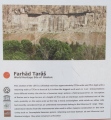


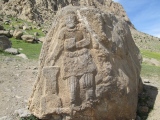

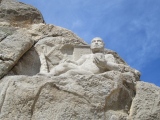

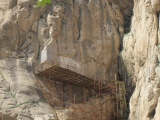
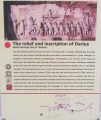
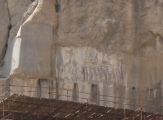

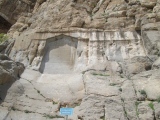


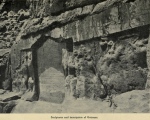




These are just the first 25 photos of Bisitun. If you log in with a free user account you will be able to see our entire collection.
Do not use the above information on other web sites or publications without permission of the contributor.
Click here to see more info for this site
Nearby sites
Click here to view sites on an interactive map of the areaKey: Red: member's photo, Blue: 3rd party photo, Yellow: other image, Green: no photo - please go there and take one, Grey: site destroyed
Download sites to:
KML (Google Earth)
GPX (GPS waypoints)
CSV (Garmin/Navman)
CSV (Excel)
To unlock full downloads you need to sign up as a Contributory Member. Otherwise downloads are limited to 50 sites.
Turn off the page maps and other distractions
Nearby sites listing. In the following links * = Image available
21.2km E 87° Charkhab Palace Ancient Palace
26.3km ENE 65° Sahneh Rock Cut Tombs* Rock Cut Tomb
27.9km W 269° Taq-e Bostan Reliefs* Carving
49.5km ENE 75° Anahita Temple* Ancient Temple
59.7km ENE 76° Godin Tepe* Ancient Village or Settlement
61.5km SE 132° Bābā Jān Tepe* Ancient Village or Settlement
88.2km NNW 327° Rabat Tepe Ancient Village or Settlement
100.6km ENE 65° Ganjnameh* Carving
108.2km ENE 65° Avicenna Mausoleum and Museum* Museum
109.2km ENE 65° Ecbatana Ancient Village or Settlement
131.6km SE 140° Falak-ol-Aflak Fortress* Museum
227.8km WSW 256° Eshnunna Ancient Village or Settlement
255.8km SSE 163° Susa (Iran)* Ancient Palace
262.3km SSE 156° Chogha Mish* Ancient Village or Settlement
270.0km SSE 162° Haft Tepe* Ancient Temple
278.0km NNE 17° Chehr-Abad Salt Mine Ancient Mine, Quarry or other Industry
283.4km SSE 159° Chogha Zanbil* Ancient Temple
298.9km NW 304° Satu Qala (Idu)* Ancient Village or Settlement
302.4km WSW 248° Iraqi National Museum in Baghdad Museum
303.9km SSW 207° Adab* Ancient Village or Settlement
307.8km WNW 290° Nuzi Ancient Village or Settlement
315.9km SW 235° Kutha Ancient Village or Settlement
324.0km SW 221° Nippur* Ancient Village or Settlement
327.9km W 267° Tell Sawwan Ancient Village or Settlement
327.9km W 267° Seleucia on the Tigris Ancient Village or Settlement
View more nearby sites and additional images

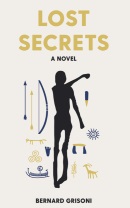
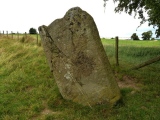
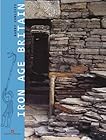


 We would like to know more about this location. Please feel free to add a brief description and any relevant information in your own language.
We would like to know more about this location. Please feel free to add a brief description and any relevant information in your own language. Wir möchten mehr über diese Stätte erfahren. Bitte zögern Sie nicht, eine kurze Beschreibung und relevante Informationen in Deutsch hinzuzufügen.
Wir möchten mehr über diese Stätte erfahren. Bitte zögern Sie nicht, eine kurze Beschreibung und relevante Informationen in Deutsch hinzuzufügen. Nous aimerions en savoir encore un peu sur les lieux. S'il vous plaît n'hesitez pas à ajouter une courte description et tous les renseignements pertinents dans votre propre langue.
Nous aimerions en savoir encore un peu sur les lieux. S'il vous plaît n'hesitez pas à ajouter une courte description et tous les renseignements pertinents dans votre propre langue. Quisieramos informarnos un poco más de las lugares. No dude en añadir una breve descripción y otros datos relevantes en su propio idioma.
Quisieramos informarnos un poco más de las lugares. No dude en añadir una breve descripción y otros datos relevantes en su propio idioma.